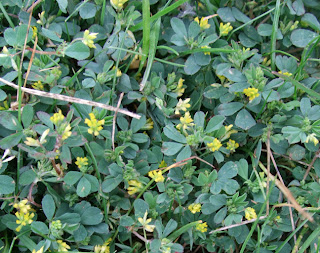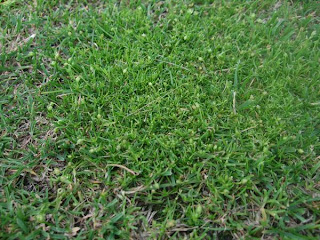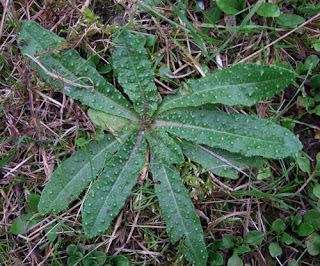 | |
| Common turf weeds such as Lesser Trefoil can be difficult to control at the best of times. However by following the advice on this page, optimum results can be achieved |
When you reach this point and are ready to treat the weeds with a selective weed killer, then the advice below will help you get the best results.
Choose the correct weed killer
- There are various weed killers available for weed control, with most of the products containing at least 2 active ingredients. For example Product A may contain the ingredients 2,4-D + mecoprop-p and Product B may contain dicamba + MCPA + clopyralid. Certain weeds are more susceptible to certain ingredients, E.G. As White clover is very susceptible to mecoprop-p, choose a product that contains mecoprop-p.
Therefore it is advisable to do a little homework on the weeds you are treating, to find out what products contain the most effective ingredient/s for your situation.
- Weeds in the lawn should be controlled when they are actively growing. This is usually between April & September with the months of May & June being the ideal period, as growth during this time is usually at it strongest. Many turf care professionals apply a nitrogen based fertiliser a week or so prior to treating weeds to encourage growth. This helps them get optimum results from weed treatment.
- Cut the lawn and then then leave it for 3 days (this will allow the leaf of the weed to grow back and it gives the spray a larger target area to stick to).
- Spray the selective weed killer
- Leave the lawn a further 3 days before mowing it (this allows the chemical to travel from the leaf into the whole plant, ensuring optimum results. Cutting the lawn, after application will remove much of the chemical before it has had a chance to travel into the weed, reducing the effectiveness.
- Always apply the weed killer when the lawn is dry as this helps the weed killer stick to the leaf. Spraying during damp conditions only causes the chemical to run off the weed and the results will be poor.
Avoid treating weeds during periods of drought as you may damage to your lawn.







 17:10
17:10
 Simon
Simon

















